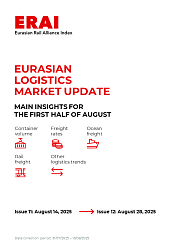The text of the news was taken from a English-language source: People’s Daily Online
On Sunday, a train carrying 100 TEUs and loaded with 343.15 tonnes of international mail from four Chinese cities and provinces including Shanghai and Zhejiang, left the eastern Chinese city of Yiwu in Zhejiang Province and headed for Vilnius, capital of Lithuania.
It is the sixth international postal train since the service was launched. After its arrival in Lithuania, the mail will be distributed across Europe.
Affected by the COVID-19 epidemic, a large number of international flights to and from China have been suspended or reduced, which has caused a huge impact on international mail delivery and a serious backlog of mail.
In response, Hangzhou Customs launched the China-Europe postal train service to help transport the mail.
«The China-Europe freight train service has obvious logistical advantages in terms of relatively stable logistical costs and transportation time amid the epidemic,» said Shang Chunyan, a staff member with Yiwu Customs under Hangzhou Customs.
Statistics show that by the end of April, a total of 129 China-Europe freight trains departed from Yiwu this year. The trains carried 10,842 TEUs of goods, up 44.1 percent year on year.
[Photo/Xinhua]




